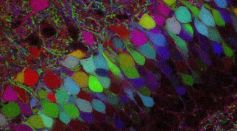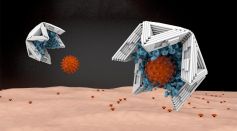NANOTECHNOLOGY
Metamaterials Made Simpler With Kirigami for Modular, Reconfigurable 3D Structures
Black Phosphorus (BP) Nanomaterials With Mitosis-Targeting Mechanism Found to Have Anticancer Properties
Amalgamation of Two Metals Form Nanocrystals Through an 'Intuitive' Technique

Artificial Neuron Can Store 'Electronic Memories,' Will It Advance Elon Musk's Neuralink Technology?
Diblock Polymers Synthesized with a New Process, Improving Production of Soft Materials
Graphene-Diamond Junctions Mimic Human Perception, Memory; Leads Way for New Class of Computers
Magnetic Nanoparticles: Study Shows New Method That Could Unlock Potential for More Effective Cancer Immunotherapy

Nanoarchitected Material Better than Kevlar and Steel; Could Potentially Replace Existing Armors

High-Density Glass From a New Type of Thin Film Liquid Could Create Stronger, Denser Materials
Flexible Computer Processor for IoT Prints Circuits onto Paper, Cardboard, Cloth
Nanoparticles Used as Heaters to Manipulate Neuron's Electrical Activity
New Bacteria-Based Fiber Tougher, Stronger Than Natural Spider Silks

Inorganic Material With Lowest Thermal Conductivity Successfully Fabricated; Could Lead to Greener Energy Solutions

DNA-Constructed Nanomaterials Possible to Trap and Neutralize Virus
Most Popular

Relativity Time Dilation Explained: The Physics of Time and Why It Moves Differently in Space

How AI Is Used in Weather Prediction: Smarter Forecasting Through Machine Learning

De-Extinction vs. Conservation Science: Which Approach Protects Biodiversity Most Effectively?

The Future of Clean Tech: Exploring the Next Generation of Renewable Energy Breakthroughs




